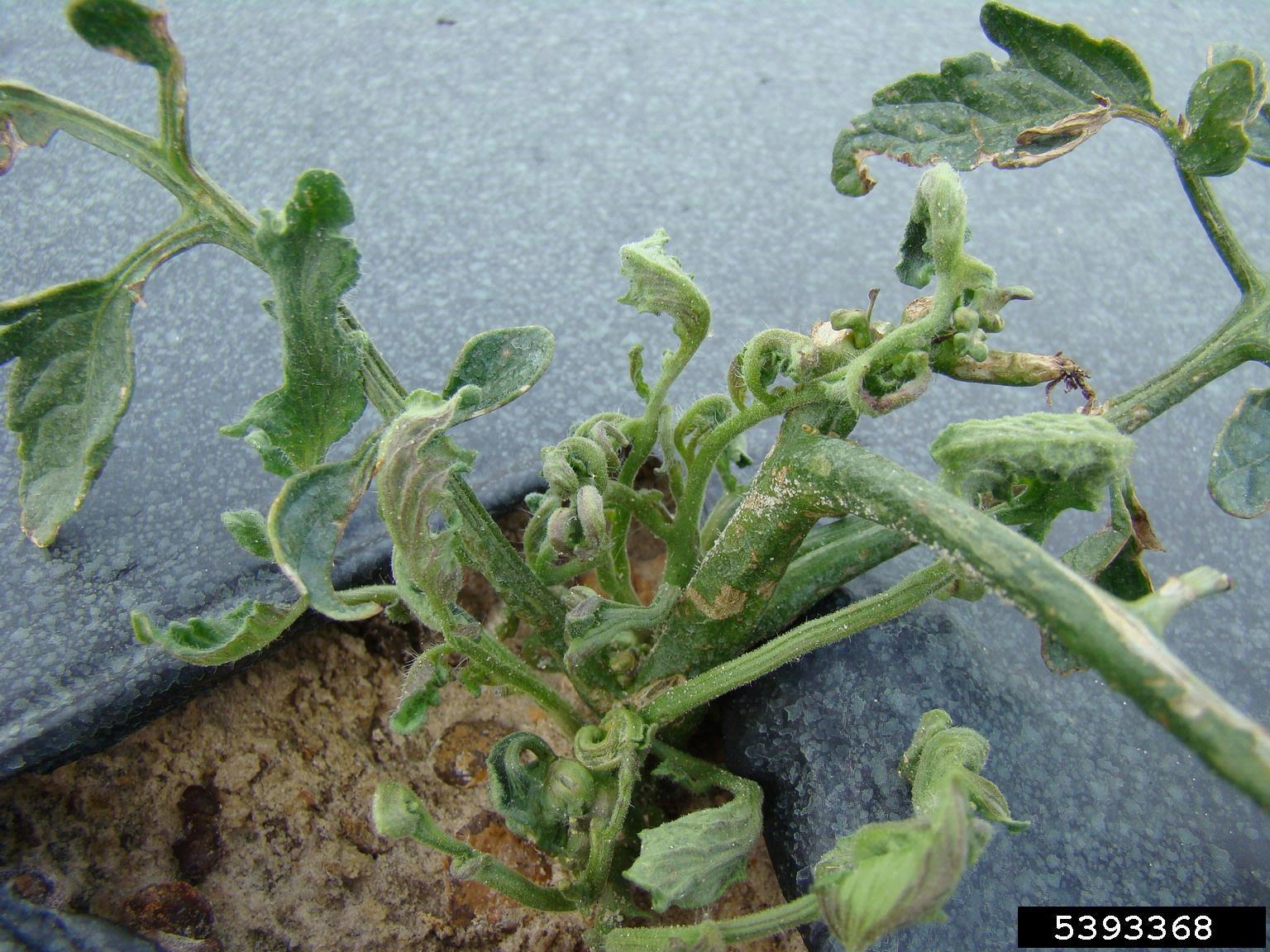Author: Natalie Hoidal, UMN Extension educator, local foods and vegetable crops
It's been a busy week of quickly planting as much as possible between rain events. Pretty much everyone is a week or two behind due to the cold spring, but the week ahead should bring warmer weather and better conditions for heat loving crops.
Crop updates
- Cucurbits: Most growers don't have their cucumbers, melons, and pumpkins in the field yet, but the week ahead of planting is a great time to start thinking about cucumber beetle management. Managing this pest is complicated and requires a multi-faceted approach. One of those approaches is to use an attractive trap crop BEFORE you plant your main cucurbit crops; if you have some quiet time while you work this week, check out the Vegetable Beet podcast episode titled "Ugh Bugs! Organic Cucumber Beetle Management".
 |
| Cucumber beetles tend to show up right when cucurbits germinate / enter the field. Photo: UMN Extension |
- Sweet corn: Soil conditions are still cold for most varieties of sweet corn. Last year at this time some farmers had already planted a couple of successions. With the warm weather in the forecast, it should be safe to plant very soon. Check the soil temperature maps in your area (linked below in the weather report) and wait until temps get closer to 60/65 consistently. The seedcorn maggot forecast predicts that the first generation has emerged already in the southern half of the state, and will be out across the entire state by the end of this week. Seedcorn maggot is most destructive during cold, wet springs when germination is slow, so waiting for warmer soils that will allow quick germination will help you to avoid issues this year.
- Beans: Customers often expect green beans early in the season, so it's tempting to get your green beans planted early. However, similar to sweet corn, green beans are susceptible to seedcorn maggot during cold and wet spring conditions. By either transplanting or waiting until your soil warms up, you'll reduce the risk of seedcorn maggot damage.
| Bean seedling with seedcorn maggot damage. Photo: Erik Burkness |
- Asparagus: Asparagus
harvest continues. I've noticed asparagus beetle damage on pretty much all of the locally grown asparagus I've seen so far this spring, including asparagus sold at farmers markets and stores. Check out the article Annie and Marissa wrote last week about asparagus beetle management if you want to explore spraying.
- Cole crops: Despite the heavy rains, it seems like folks are seeing relatively good germination on radishes, turnips, and other direct seeded Brassicas. I've heard mixed reports of flea beetles; some growers haven't seen them at all yet, and others have lost entire crops already. Review the management recommendations for flea beetles before they start to pick up if you're not already seeing problems. I expect we'll see some more bolting this week as temperatures increase. Last week I wrote about bolting and why we actually see it more in years where we've had cold weather.
- Tomatoes and peppers: Plenty of growers planted tomatoes and peppers last week, and quite a few saw cold damage. While we did not see freezing temperatures in most of the state this week, prolonged temperatures below 50 degrees can lead to stress. Unfortunately I don't have any good photos of cold stressed tomatoes, but I found the photo below from an article by Barrero-Gill et al. (2016) showing seedlings exposed to 4 degree C temperatures (39.2 degrees F) for 5 and 10 days. Plants show signs of wilting, and chlorosis that can sometimes look like sun scald.
- Garlic: If you still need to fertilize your garlic this spring, we're reaching the end of the fertilization window. Fertilizing too late in the season can delay bulb development and lead to lower yields.
- Potatoes: It seems like most growers finally have their potatoes in the ground. For the last two years, we've been working with farmers at Clover Bee Farm, Shepherd Moon Farm, and Big River Farms to test non-chemical management strategies for potato beetles. Check out the video from the trials to see what the farmers thought of strategies including trenches, row cover, straw mulch, trap crops, and flaming.
Vegetable weather report
Soil temperatures from MDA stations, data collected to 6’’ depth
|
Station location |
Nearest major town |
Coldest soil temperature in the last 7 days (approx.) |
Temperature on May 25, 2020 (approx). |
|
Blue Earth |
Albert Lea (Iowa border) |
55 º F |
58 º F |
|
Russel |
Marshall |
52 º F |
62 º F |
|
Henderson |
St. Peter / Belle Plaine |
54 º F |
64 º F |
|
Hoffman |
Alexandria |
47 º F |
51 º F |
Soil temperatures from ND-managed stations in MN
|
Station location |
Nearest major town |
Approximate turf soil temp on May 25 (4’’) |
|
Sabin |
Fargo / Moorhead |
55 º F |
|
Mavie |
Thief River Falls |
52 º F |
|
Fox |
Roseau (Canada border) |
54 º F |
Problems in the field
Time to talk about herbicide drift
- The application cutoff date is June 12th everywhere south of interstate 94 in Minnesota.
- For growers north of interstate 94, applications are allowed until June 30th.
- Applications are also banned when the forecast for the day exceeds 85 degrees Fahrenheit.
 |
| Phenoxy herbicide damage on tomato transplant. Photo: Rebekah D. Wallace, University of Georgia, Bugwood.org |
Comments
Post a Comment